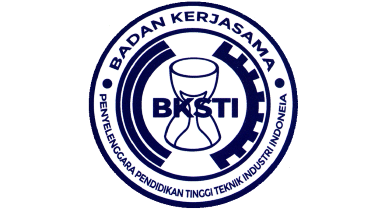Pengembangan Kursi Kerja Ergonomis di UKM Tenun Ikat Medali Mas
DOI:
https://doi.org/10.30737/jatiunik.v3i1.495Keywords:
Ergonomis, Anthropometry, Work Station Design, Sitting Posture, Work ChairAbstract
The role of humans as a source of labor in SME weaving is still very dominant in the production process, especially when the production process of converting yarn into fabric with non-machine looms. Sitting position during the process of weaving activities that lasts a long time with 8 hours per day, causes the sitting position to be less comfortable and cause complaints of pain in the back or spine. The purpose of this study is to produce an ergonomic work chair design with an anthropometric approach to improve comfort, reduce fatigue and other health effects caused by sitting positions that are less comfortable than the previous work chair, by focusing the work chair design on human body size. The results of this study are the development of weaving work chairs can be achieved by the addition of the backrest and cushion on the seat cushion of the chair as well as the addition of high-low chair settings according to anthropometry of workers compared to pre-existing weaving work chairs. Anthropometric measurements using the 5th and 95th percentiles obtained the dimensions of the work chair dimensions: 1) The height of the chair from the floor 95 cm, 2) The height of the seat cushion from the floor 52 cm, 3) The width of the seat base 39 cm, 4) The width of the backrest 35 cm, 5) Back length 31 cm, 6) Back height 49 cm.
Â
Peranan manusia sebagai sumber tenaga kerja pada UKM tenun ikat masih sangat dominan dalam proses produksinya terutama saat kegiatan proses produksi pengubah benang menjadi kain dengan alat tenun bukan mesin (ATBM). Posisi duduk pada saat proses pelaksaan kegiatan menenun yang secara terus menerus dengan waktu 8 jam per hari, menyebabkan posisi duduk menjadi kurang nyaman dan mengakibatkan  keluhan sakit terhadap punggung ataupun tulang belakang. Tujuan dari penelitian ini adalah menghasilkan rancangan kursi kerja yang ergonomi dengan pendekatan antropometri untuk meningkatkan kenyamanan, mengurangi kelelahan dan dampak-dampak negatif yang disebabkan akibat posisi duduk yang kurang nyaman dari kursi kerja sebelumnya, dengan memfokuskan rancangan kursi kerja pada ukuran tubuh manusia. Hasil dari penelitian ini adalah pengembangan kursi kerja tenun  dapat dicapai dengan penambahan sandaran serta bantalan pada alas tempat duduk pada kursi serta penambahan pada pengaturan tinggi rendah kursi sesuai dengan anthropometri pekerja dibandingkan dengan kursi kerja tenun yang sudah ada sebelumnya. Pengukuran secara anthropometri menggunakan persentil ke-5 dan ke-95 maka diperoleh rancangan dimensi kursi kerja: 1) Tinggi kursi dari lantai 95 cm, 2) Tinggi alas duduk dari lantai 52 cm, 3) Lebar alas kursi 39 cm, 4) Lebar sandaran 35 cm, 5) Panjang sandaran 31 cm, 6) Tinggi sandaran 49 cm.
Â
References
D. Mayasari and F. Saftarina, “Ergonomi sebagai Upaya Pencegahan Musculoskeletal Disorders pada Pekerja,†JK Unila, 2016.
A. Kristanto and D. A. Saputra, “Perancangan Meja dan Kursi Kerja yang Ergonomis pada Stasiun Kerja Pemotongan Sebagai Upaya Peningkatan Produktivitas,†J. Ilm. Tek. Ind., 2011.
Satriardi, D. A. Anggraini, and Y. Mitra, “PERANCANGAN KURSI KULIAH YANG ERGONOMIS DENGAN PENDEKATAN METODE QUALITY FUNCTION DEPLOYMENT (QFD),†Semin. Nas. IENACO -, vol. 1, no. 1, pp. 2337–4349, 2017.
L. D. Indrasari and S. Rahayuningsih, “PERANCANGAN ALAT PENYARING TAHU SECARA ERGONOMIS,†Tek. Ind. Univ. Kadiri, pp. 1219–1229, 2017.
S. Rahayuningsih and S. A. Sari, “Perancangan Kursi Dan Meja Lipat Untuk Mahasiswa ( Studi Kasus : Mahasiswa Universitas Kadiri ),†pp. 4–8, 2018.
L. Tarwaka, Solichol, Sidiajeng, Ergonomi Untuk Keselamatan, Kesehatan Kerjadan Produktivitas. Surakarta: UNIBA PRES, 2004.
Tarwaka, Ergonomi Industri, Dasar-dasar Pengetahuan dan Aplikasi di Tempat Kerja. Edisi Ke-2. 2015.
K. K. E. H. K. A. D. K. Hoffman, Ergonomics 3rd Edition How to Design for Ease and Efficiency. Academic Press, 2018.
A. S. N. J. E. Ridd, Health, Safety and Ergonomics 1st Edition, 1st ed. Butterworth-Heinemann: Butterworth-Heinemann, 1988.
M. A. Jaworek, T. Marek, and W. Karwowski, “The scale of Work-Related Affective Feelings (WORAF),†Appl. Ergon., vol. 82, no. September 2018, p. 102945, 2020.
H. dan Y. Iridiastadi, Ergonomi Suatu Pengantar, 4th ed. Bandung: PT. Remaja Rosdakarya, 2017.
H. Iridiastadi and Yassierli, Ergonomi Suatu Pengantar, 1st ed. Bandung: Remaja Rosdakarya, 2015.
F. A. Ekoanindiyo, “Analisa Perancangan Kursi Kuliah yang Ergonomi,†Din. Tek., vol. IV, No. 1, pp. 64–76, 2010.
O. Tanudireja and M. Solahuddin, “Ergonomi Ditinjau dari Antropometri pada Interior Restoran Pizza-Hut di Surabaya Timur,†J. INTRA, 2013.
S. M. W. Wadya, “Ergonomi dalam Lingkungan Kerja,†VEDC Malang, 2016. [Online]. Available: https://www.vedcmalang.com/pppptkboemlg/index.php/baru/44-mesin-cnc/1129-sonnym. [Accessed: 07-Jul-2019].
N. Novziransyah, D. Syahputra, E. Depianti, and M. R. Mukhtar, “HUBUNGAN POSISI KERJA DENGAN KELUHAN MUSKULOSKELETAL PADA KARYAWAN- KARYAWATI SWALAYAN DIAMOND MEDAN JOHOR,†J. Ris. Hesti Medan Akper Kesdam I/BB Medan, 2018.
S. Wignjosoebroto, Ergonomi Studi Gerak dan Waktu, Edisi Pert. Jakarta: PT. Guna Widya, 1995.
L. Dedy, “Antropometri,†blogspot.com, 2012. [Online]. Available: http://dedylondong.blogspot.com/2012/03/dasar-perancangan-meja-dan-kursi.html. [Accessed: 27-Jul-2019].
C. Zetterberg, M. Heiden, P. Lindberg, P. Nylén, and H. Hemphälä, “Reliability of a new risk assessment method for visual ergonomics,†Int. J. Ind. Ergon., vol. 72, no. March, pp. 71–79, 2019.
F. Wajdi and W. Kusmasari, “Resiko jenis pekerjaan terhadap keluhan Msds pada perawat RSUD Serang Banten,†Tek. Ind. UMJ Jakarta, no. November 2015, pp. 1–7, 2015.
A. Santoso, B. Anna, and A. Purbasari, “Perancangan Ulang Kursi Antropometri Untuk Memenuhi Standar Pengukuran,†Profisiensi, 2014.
A. S. Mariawati, A. Umyati, and F. Anggraini, “Identifikasi POstur Kerja Fisioterapis Stroke Excercise Rehabilitasi Medik Rumah Sakit Umum XYZ dengan Pendekatan RULA,†vol. ISSN: 2337, p. 8, 2016.
I. Sulistiawan, H. B. Santoso, and A. Komari, “Perancangan Produk Kep Potong Rambut Dengan Mempertimbangkan Voice Of Customer Menggunakan Metode Quality Function Deployment,†JATI UNIK J. Ilm. Tek. dan Manaj. Ind., 2019.
I. Safi’i, “Penyusunan Konsep pada Perancangan & Pengembangan Produk Penyusunan,†2019.
M. Noviana and S. Hastanto, “Penerapan Metode Quality Function Deployment (Qfd) Untuk Pengembangan Desain Motif Batik Khas Kalimantan Timur,†J@Ti Undip J. Tek. Ind., vol. 9, no. 2, pp. 87–92, 2016.
Laksmi Kusuma Wardani, “EVALUASI ERGONOMI DALAM PERANCANGAN DESAIN,†Dimens. Inter., 2003.
M. D. Angelica et al., “Determinants of Time Allocation across the Lifespan A Theoretical Model and an Application to the,†PLoS One, 2012.
J. A. Pradana and P. Popliteal, “REKAYASA KANSEI DALAM PENGEMBANGAN KONSEP PRODUK LACI Abstrak Program Studi Teknik Industri Fakultas Teknik , Universitas Pancasakti Tegal ISBN 978-623-7619-00-0 Program Studi Teknik Industri Fakultas Teknik , Universitas Pancasakti Tegal ISBN 978-623-7619-00-0,†vol. 2013, pp. 28–40, 2019.
D. E. Gregory and S. E. Romero, “Can the use of an alternatively designed tamper alter spine posture and risk of upper limb injury while tamping espresso?,†Int. J. Ind. Ergon., vol. 65, pp. 103–109, 2018.
Downloads
Published
How to Cite
Issue
Section
License
Information regarding Copyright and Licensing at JATI UNIK as follows:
- Licensed Use of Non - Commercial Articles will be governed by the Creative Commons Attribution license, which is featured on the Creative Commons Attribution Non-Commercial Share A Like 4.0 International License.
- The author guarantees that the articles published through JATI UNIK are original and do not contain statements that violate the law do not violate others' rights are subject to copyright, which is held exclusively by the author and free from the rights of third parties. The author is allowed to quote from various sources used for research and not to harm any party.
- JATI UNIK disseminates articles published with the rules set by Creative Commons. UNIK JATI license allows users to copy, distribute, display, and work for non-commercial purposes. Users also need to connect authors and JATI UNIK with the distribution of articles in journals.
- The Author rights, namely copyrights, ownership rights, patents, rights to use the substance of articles in the future, rights to reproduce articles for personal purposes and not to be traded, rights to conduct personal archives, rights to contract used for the non-exclusive distribution of articles published in the form a book and acknowledge the initial publication of the article originating from JATI UNIK.
- Suppose articles published by the author through JATI UNIK are compiled with other authors. In that case, it is necessary to create a form containing the authority of all authors involved in the article's production by including the agreement agreed upon by all authors in the article.
- The next point is, the agreement can be terminated if the author or JATI UNIK violates the agreement and cannot make repairs to the customer within a maximum of 2 months after being given information asking for the violation to be corrected. If there is no violation of the agreement, the license will automatically terminate and affect UNIQUE JATI UNIK.
- Regarding royalties, so far, if it is following applicable legal regulations, the author will waive his right to collect royalties on articles that have been licensed by JATI UNIK.
- In publishing the article, the editorial process is successful. JATI UNIK will continue it. JATI UNIK has the right to adjust articles related to punctuation, spelling, capital letters, references used, and usage adapted to JATI UNIK. The author acknowledges that the article can be published and accessed free of charge by the public.















